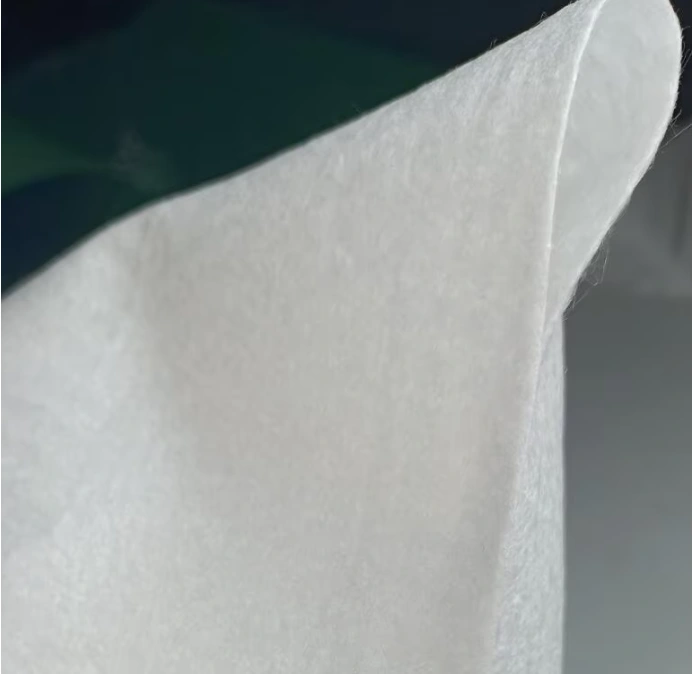In the intricate world of industrial filtration, the demand for highly efficient, durable, and cost-effective filter media is paramount. Among the advanced solutions, melt blown filter media stands out as a superior choice, particularly when integrated into composite structures. This sophisticated material is engineered to capture sub-micron particles with exceptional efficiency, making it indispensable across a multitude of critical applications. Its unique manufacturing process yields a non-woven fabric with a vast internal surface area and intricate pore structure, which is vital for achieving high filtration performance while maintaining low pressure drop. Understanding the nuanced aspects of its production, technical specifications, and diverse applications is key for B2B decision-makers seeking optimal filtration solutions that promise long-term operational benefits.
The evolution of filtration technology continually pushes the boundaries of material science, leading to innovations like advanced meltblown filter material. This content aims to provide a comprehensive overview for technical professionals and procurement specialists, covering everything from the fundamental manufacturing principles to real-world performance metrics and customization options. We delve into how this media addresses stringent industry standards, offering unparalleled advantages in air and liquid filtration systems.
The production of melt blown filter media is a highly specialized polymer extrusion process that enables the creation of ultra-fine fibers. Unlike traditional weaving or knitting, the meltblown process involves directly transforming polymer pellets into a non-woven web. The primary material used is typically polypropylene (PP) due to its excellent chemical resistance, hydrophobic nature, and cost-effectiveness, though other polymers like PET or PBT can also be used for specific applications requiring higher temperature resistance or chemical inertness.
This meticulous process ensures the creation of a filtration medium characterized by a large surface area, high void volume, and a tortuous path for particles, leading to excellent particulate capture capabilities. Adherence to standards like ISO 9001 and internal quality control protocols ensures consistency and reliability in every batch of meltblown filter material produced by leading manufacturers.

The effectiveness of melt blown filter media is quantified by several key technical parameters. These metrics are crucial for engineers and designers to select the appropriate media for specific filtration challenges, ensuring optimal performance, longevity, and compliance with industry standards such as ASHRAE 52.2, EN779, and ISO 16890. Understanding these specifications is vital for any prospective client engaging with melt blown filter manufacturers.
| Parameter | Range/Typical Value | Impact on Performance |
|---|---|---|
| Basis Weight | 15 - 200 gsm | Affects rigidity, thickness, and overall filtration capability. |
| Fiber Diameter | 0.5 - 5.0 µm | Finer fibers enhance efficiency, but can increase pressure drop. |
| Filtration Efficiency (0.3 µm) | 65% (MERV 8) to 99.999% (ULPA) | Key determinant of particle capture capability. |
| Initial Pressure Drop (at 5.33 cm/s) | 5 - 200 Pa (0.02 - 0.8 in. w.c.) | Influences energy consumption; lower is better. |
| Air Permeability | 50 - 1500 L/m²/s | Indicates how easily air passes through; inversely related to pressure drop. |
| Pore Size (Average) | 0.5 - 10 µm | Directly impacts particle capture, especially for liquid filtration. |
These parameters are meticulously controlled during manufacturing and verified through rigorous testing, ensuring that each batch of meltblown media meets the specified performance criteria.
The versatility and high performance of Meltblown And Synthetic Composite Filter Media allow it to be deployed across a wide spectrum of industries and applications, both in air and liquid filtration. Its ability to effectively capture microscopic particles, coupled with properties like chemical resistance and hydrophobicity, makes it an ideal choice where purity and air quality are critical.
In these diverse settings, the material’s key advantage lies in its high efficiency-to-pressure-drop ratio, meaning it can effectively filter without significantly impeding airflow, leading to energy savings and extended filter life. For instance, in HVAC systems, an optimized filter can lead to a 15-20% reduction in fan energy consumption over its lifespan compared to less efficient alternatives.

The combination of meltblown technology with synthetic composite layers yields a filter media with a formidable array of advantages over conventional materials. This hybrid approach leverages the strengths of different nonwoven technologies to create a superior filtration solution, making it a preferred choice for discerning melt blown filter manufacturers.
These combined benefits underscore why Meltblown And Synthetic Composite Filter Media is a premium choice for high-performance filtration applications, offering a compelling return on investment through superior air quality, energy efficiency, and extended product lifespan.

Selecting the right supplier for melt blown filter media is as critical as understanding the media itself. A reputable manufacturer offers not just a product, but a partnership built on expertise, reliability, and support. Key considerations include the manufacturer's experience, certifications (e.g., ISO 9001:2015), R&D capabilities, and commitment to quality control. Leading melt blown filter manufacturers invest heavily in advanced testing equipment to ensure their products consistently meet and exceed industry standards, providing detailed technical data sheets and certificates of analysis for every batch.
For specialized applications, off-the-shelf solutions may not suffice. Experienced manufacturers offer comprehensive custom solutions, working closely with clients to develop tailor-made Meltblown And Synthetic Composite Filter Media. This process typically involves:
A strong manufacturer will also offer extensive technical support, from initial consultation and sample testing to post-purchase performance analysis, ensuring seamless integration of their meltblown filter material into the client's end product.
The efficacy of Meltblown And Synthetic Composite Filter Media is best demonstrated through its successful deployment in challenging environments. Here are a few illustrative examples:
These examples highlight the tangible benefits of choosing high-quality meltblown filter material: improved air quality, extended product lifespan, reduced energy consumption, and compliance with stringent industry regulations.
A1: The most common material is polypropylene (PP) due to its excellent filtration properties, chemical resistance, and cost-effectiveness. However, other polymers like polyethylene (PE) or polybutylene terephthalate (PBT) can be used for specific applications requiring different thermal or chemical characteristics.
A2: Electret charging imparts a permanent electrostatic charge to the fibers of the meltblown filter media. This charge allows the media to attract and capture charged and uncharged particles through electrostatic attraction, in addition to mechanical capture mechanisms. This significantly boosts filtration efficiency for very fine particles (sub-micron) while maintaining a lower pressure drop compared to purely mechanical filtration.
A3: Lead times for custom orders of Meltblown And Synthetic Composite Filter Media can vary depending on the complexity of the specification, order volume, and current production schedules. Typically, after sample approval, production lead times range from 3 to 6 weeks. We recommend discussing your specific requirements with our sales team for an accurate estimate and to explore options for expedited delivery if needed.
A4: We are committed to delivering high-quality meltblown filter material. Our products undergo rigorous quality control testing at every stage of production and are backed by industry-standard warranties against manufacturing defects. We adhere to ISO 9001 quality management systems. Detailed warranty information and certificates of analysis are provided with each order, ensuring transparency and reliability. Our dedicated customer support team is always available to address any concerns.
Thickness:0.2-6 mm or Customized
Strand Thickness:0.5-8mm
Swd:2.5-100mm Lwd: 4.5-200mm
Surface Treatment:Powder Coated,Galvanized
MATERAL: PHENOLIC PAPER
MELT-BLOWN PBT
NON-WONEN LAMINATES
DIESEL FUEL FINE FILTERATION GRADE
APPLICATION : FUEL OIL WATER SEPERATION FILTER MEDIA
Material: Electrostatic cotton with activated carbon
PET/PP with Activated Carbon
Basic weight: 200-800g/m2
Application: Cabin Air Filters Panel Air Filters, Filter Cartridge, etc.
RAW MATERIAL: Polypropylene
PROCESS TECHNOLOGY: Melt-blown non-woven
RANGE OF EFFICIENCY: M5 ~ H11
Jul,2025,31
Jul,2025,31
Jul,2025,31
Jul,2025,31
Email to this supplier

